How to Prune Peach Trees
- February 8, 2024
- 0 comment
Pruning peach trees is both an art and a science, crucial for enhancing the tree’s health, vitality, and productivity. Precise pruning practices are essential to ensure that your peach trees remain vibrant and fruitful, contributing to an abundant garden year after year.
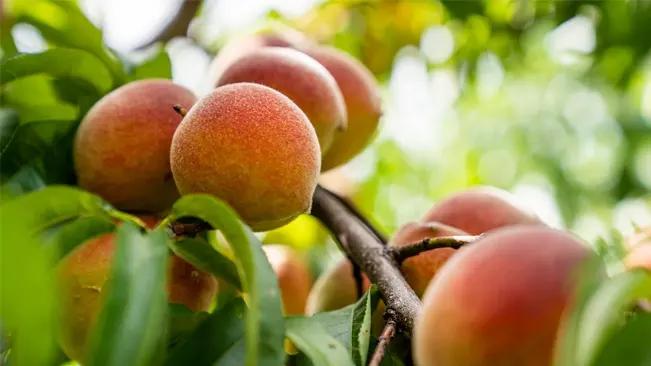
By carefully selecting the optimal timing for pruning, identifying which branches need to be removed, and understanding the best methods to shape your peach tree for healthy growth, this guide aims to provide you with comprehensive knowledge. Such insight will help maintain your peach trees in top condition, promoting lush foliage and abundant, delicious fruit harvests season after season. This careful attention to detail ensures that your peach trees not only survive but thrive, offering beauty and bounty to your garden.
When to Prune Peach Trees
Contrary to many fruit-bearing plants that are pruned in their dormant phase, peach trees require a different approach. Pruning during the cold months can lead to dieback and reduced cold hardiness. The optimal time for pruning is in the spring, as the buds begin to swell and display hints of pink. It’s advisable to err on the side of pruning slightly late than too early. Nonetheless, shoots in the tree’s center, which obstruct sunlight and airflow to the fruits, can be removed at any time.
Pre-Pruning Considerations
Before you begin pruning, it’s essential to understand the specific needs of peach trees. Unlike other fruit trees that are pruned to highlight a central trunk, peach trees thrive when shaped into an open “V” or vase, promoting sun and air exposure to the center. This structure is achieved by maintaining three to five well-spaced main branches. Also, since peach trees bear fruit on one-year-old wood, it’s possible and even recommended to prune about 40% of the tree annually to stimulate new fruit-bearing growths.
Equipment and Materials for Pruning Peach Trees
| Category | Item |
|---|---|
| Tools | Bypass Shears, Long-handled Pruners (Loppers), Pruning Saw, Stepladder |
| Safety Gear | Thick Gloves, Long-Sleeved Shirt |
| Materials | Refuse Bags, Disinfectant for Tools |
Pruning Process
1. Remove Dead, Damaged, and Diseased Branches
The initial step in pruning a peach tree involves diligently removing any branches that are dead, diseased, or damaged, a crucial practice not confined to the pruning season but rather conducted year-round whenever such issues are spotted.
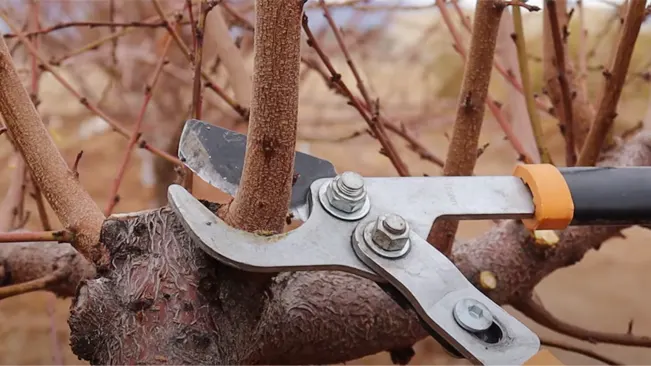
This preemptive measure is vital for preventing the spread of disease and ensuring the tree’s energy is directed toward fostering healthy growth. Addressing these problems promptly safeguards the tree’s health and sets the stage for a more productive and resilient plant.
2. Choose Main Branches, Remove the Others
During the formative years of a peach tree, it’s essential to concentrate on building its foundational structure by identifying and preserving three to five upward-growing scaffold branches, while eliminating rivals.
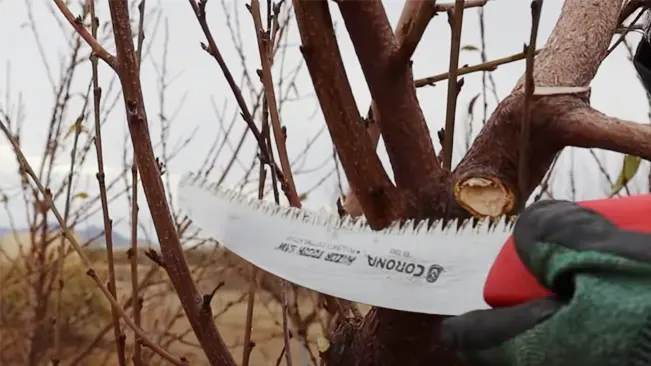
The goal is to sculpt a tree with a V-shaped silhouette and an unobstructed center, ensuring optimal light penetration and air circulation crucial for the tree’s health and fruit production. This early investment in shaping the tree lays the groundwork for its future growth and yield.
3. Trim Tall Branches
Regularly trimming the ends of higher branches to ensure they remain accessible from the ground plays a pivotal role in managing a peach tree’s height effectively. This strategic pruning practice not only simplifies the harvesting process by keeping the fruits within easy reach but also significantly contributes to the tree’s overall well-being and structural stability.
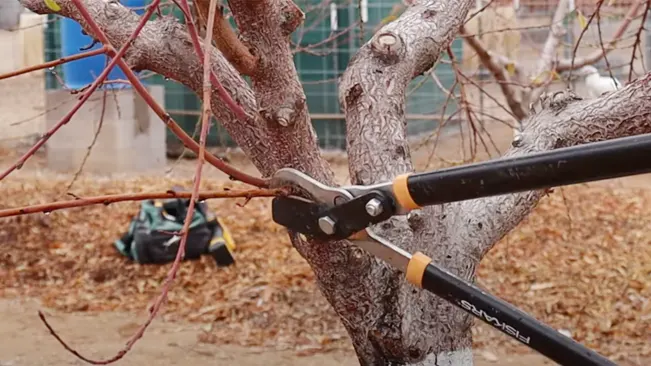
By preventing the tree from becoming overly tall and unwieldy, this approach aids in sustaining a balanced growth pattern, which in turn enhances the tree’s productivity. Ensuring the peach tree stays at a practical height facilitates routine care and monitoring, thereby fostering a healthier, more vigorous tree capable of producing abundant, high-quality fruit.
4. Remove Spindly Interior Branches
Removing any weak branches that grow inward towards the center from the main scaffold branches is an essential step in maintaining the structural integrity and desired V shape of a peach tree. This pruning strategy not only helps in preventing the overcrowding of branches within the tree’s canopy but also plays a pivotal role in enhancing air circulation and sunlight penetration to the lower parts of the tree.
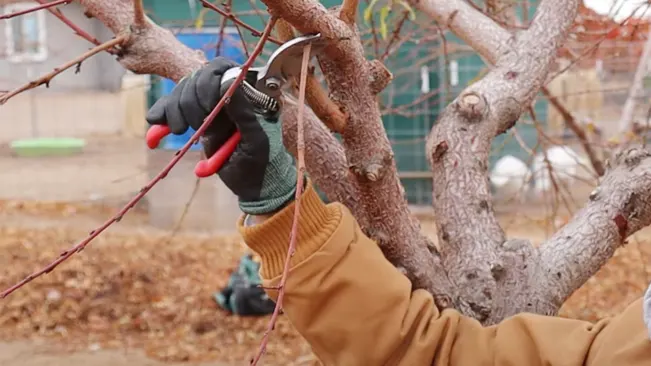
By ensuring that the tree’s interior remains uncluttered, this approach encourages healthier growth, reduces the risk of disease, and promotes more uniform and abundant fruit production, contributing to the overall vigor and yield of the peach tree.
5. Cut Back Remaining Red Shoots
Trimming the new red shoots, which signal the tree’s capacity for bearing fruit, to a length of approximately 18 inches is a critical practice in peach tree pruning. This precise cutting, ideally positioned just above an outward-facing bud, is designed to optimize future growth directions and foster a well-structured, productive tree.
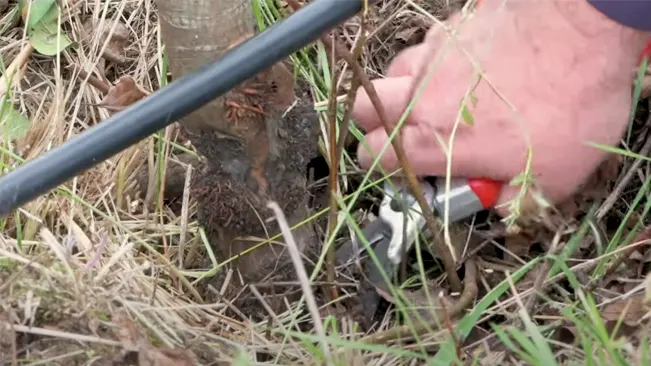
These red shoots are vital for the next season’s harvest, and by carefully pruning them to a manageable length, you encourage a balanced distribution of energy and resources within the tree, enhancing both the quality and quantity of the forthcoming fruit. This methodical approach not only contributes to the tree’s aesthetic appeal but also to its health and fruitfulness, ensuring that the peach tree remains a bountiful asset in your garden.
6. Plan for Future Growth
It’s important to remove tall branches that show no signs of new growth, as they can drain the tree’s resources without contributing to its productivity. Concurrently, it’s beneficial to scout among the secondary branches for those with the potential to become scaffold branches in the coming seasons. Scaffold branches form the tree’s primary structure, supporting fruit production and overall health. By carefully selecting these key branches early on, you can guide the tree’s future growth pattern, ensuring a strong, well-distributed framework that enhances fruit quality and accessibility, and maintains the tree’s vigor and balance.
Conclusion
Pruning stands out as a fundamental aspect of peach tree maintenance, playing a vital role in nurturing their health, encouraging robust growth, and boosting fruit yield. Adhering to the detailed pruning instructions provided enables gardeners to keep their peach trees in optimal condition. This careful attention to pruning ensures that the trees not only thrive but also consistently produce bountiful harvests, season after season. Through this practice, gardeners can look forward to enjoying the fruits of their labor, quite literally, as their well-tended peach trees become a source of abundant and delicious produce year after year.
FAQs
- Why is pruning peach trees important?
Pruning encourages healthy growth, prevents disease, and increases fruit yield by allowing better sunlight and air circulation. - Can I prune my peach tree in the winter?
It’s best to avoid winter pruning as it can make peach trees more susceptible to cold damage and dieback. Spring, as the buds begin to swell, is the ideal time. - How much of the tree should I prune each year?
Approximately 40% of the tree should be pruned annually to promote healthy new growth that will bear fruit. - What shape is best for a peach tree?
Peach trees thrive when pruned into an open “V” or vase shape, which allows for ample sunlight and air to reach the center. - What should I do with the branches I remove?
Cut the removed branches into manageable pieces and dispose of them in refuse bags or bundle them for disposal to maintain cleanliness and prevent disease spread. - When is the best time to start pruning a newly planted peach tree?
Begin light pruning to shape the tree when it’s at least three years old and mature enough to bear fruit. Before this, limit pruning to removing damaged or diseased branches and shaping. - How do I identify which branches to remove during pruning?
Look for branches that are dead, damaged, or diseased, as well as those that grow inward, block sunlight and air circulation, or disrupt the desired vase shape. Also, remove old gray shoots, which are non-fruiting, and maintain the reddish, one-year-old shoots. - Can pruning a peach tree too much be harmful?
Yes, over-pruning can stress the tree, reduce its fruit yield, and make it vulnerable to diseases and pests. It’s crucial to not remove more than 40% of the tree’s volume in a single year. - Is it necessary to use any specific type of pruning cut?
Yes, when cutting branches, make angled cuts just above an outward-facing bud to encourage growth away from the center of the tree. This technique helps maintain the tree’s open structure and promotes healthier, more productive growth. - What should I do if my peach tree has never been pruned and is overgrown?
For severely overgrown trees, it may be necessary to undertake a more drastic pruning over several years to restore shape and productivity. Start by removing any dead or diseased wood and thinning out the center to allow light and air in. Each year, gradually shape the tree while being careful not to remove more than a third of the tree’s total volume in any one year to avoid shocking the tree.
Got any tips or stories about pruning your own peach trees? We’d love to hear how you keep your trees thriving! Share your experiences or ask questions in the comments below, and let’s help each other grow the best peaches on the block!

Charles Hayes
Forestry AuthorI'm Charles Hayes, I bring over 15 years of specialized expertise in landscaping and woodworking, blending artistic design with sustainable environmental stewardship. My career, fueled by a profound passion for the natural world, encompasses extensive education and hands-on experience in creating harmonious, eco-friendly outdoor spaces and responsibly managing forest resources. Recognized for my professional standing, I am committed to continuous learning and certification in cutting-edge practices. My expertise is not only reflected in my work but also in my contributions to community projects, educational workshops, and collaborations with industry leaders. As an authoritative voice in my field, I strive to share knowledge and promote environmentally conscious approaches, making me a trusted resource in landscaping and forestry.

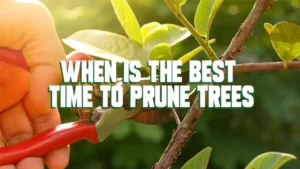




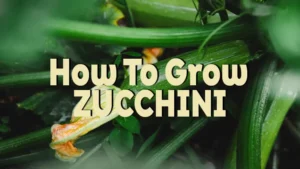



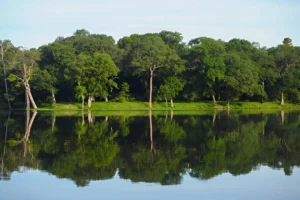


Leave your comment